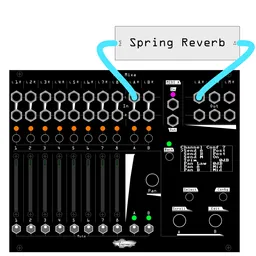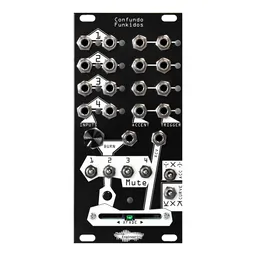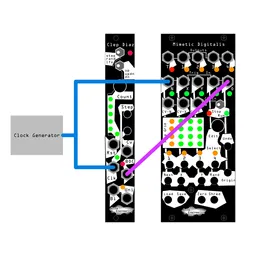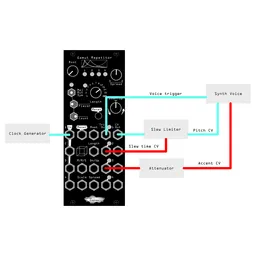Percussion is an important part of many patches, and there’s quite a selection of fantastic percussive modules in Eurorack. But whether your percussion is coming from samples, a percussive synth voice like the Basimilus Iteritas Alter, or from an elaborate patch made up of multiple modules, having new ways to shape their dynamics can be key to layering them in with other elements and making things sound the way you want them to. Today, we’ll explore a technique to emulate a process called transient shaping.
What is a transient shaper?
A transient shaper is a dynamics processor used for shaping the initial impact of percussive material. Traditional shapers will generally have only a few controls: attack changes how sharp or soft the transient is, and sustain which controls how long it takes for the transient to decay. When a transient is detected, the sound is processed and its dynamics are shaped based on the chosen settings.
This may sound like something you’d do with a compressor: transient emphasis is definitely a common use for compressors, but with a completely different internal process. Transient processors are designed to do just that: you get more granular transient control, but without the flexibility of general dynamics processing you get with a compressor. Different tools for different jobs!
Now, why are we talking about transient shapers so much? Well, it’s incredibly easy to do great-sounding transient shaping in Eurorack -- in fact, it’s a technique that often works better in the rack than in a traditional mixing environment because of the types of control signals we use in Eurorack. Let’s take a listen to what it can sound like on a simple kick and snare
Patching transient shaping
Patching a transient shaper is incredibly simple: all we need is a VCA like Quantus Ampla, an envelope, and a mult.
I use either AR or decay envelopes for this, but something like an ASR could also be used for even more control. The concept is simple: mult a trigger to your drum voice and to the envelope, patch your drum into the VCA, and patch the envelope to the VCA’s CV input. That’s it! Change the shape of your envelope and its attack and decay times to emphasize transients or soften their attacks.
Taking it further: Dry/wet mixing with Quantus Ampla
Since we’re using Quantus Ampla in our example, we can take things a step further and create a dry/wet mix between our original sound and our shaped sound. All we need is an offset to set the level of our dry signal, and Quantus Ampla takes care of the mixing.
A dry/wet balance opens up some new opportunities in this patch: we could, for instance, shape the decay/release stage of our envelope short enough to isolate only the transient, and use the completely dry tail to create an extremely sharp attack and smooth dynamics through the rest of the sound.
Now, let’s see how all this can sound:






